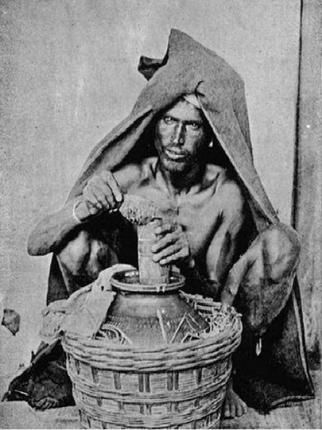
It is rather typical of several Mylaporeans to pride themselves on the fact that their area has two streets named after John F. Kennedy. Sadly for them, Kennedy Streets 1 and 2 have nothing to do with the President of the U.S. who was assassinated on November 22, 1963 at Dallas, Texas. For that matter, these narrow thoroughfares that connect Luz Church and Musiri Subramania Iyer (Oliver) Roads do not even commemorate any other Kennedy. The two lanes are actually a throwback to the not-so-distant pastoral past of our city. Names recalling that verdant history abound — Ayanpuram (now Ayyanavaram) — the hamlet of cowherds, and Mandaiveli — pastureland, are two such examples. The Kennedy Streets are part of the same heritage.
They are both Kannadian Streets and commemorate a community of curd-sellers who, as the name suggests, were Kannada speaking. This sub-grouping among Lingayats had some distinctive trade practices — they carried on their heads a woven basket in which was a mud pot that contained the curds. The whole ensemble was covered with a thick black woollen blanket, no matter what the season of the year was. Setting out early in the morning, they would cover all the streets, shouting alternately ‘thayiroooo’ (thayir is Tamil for curds) and its Telugu equivalent — ‘perugu’. Given the blanket and the weird cries, mothers conveniently used them to scare their kids into submission.
Edgar Thurston (1855-1935), the anthropologist, studied the community very closely and devoted several pages to them in his Castes and Tribes of Southern India, a book he wrote with K. Rangachari and published in 1909. As per this work, which also has a photograph of a Kannadian, the tribe was to be found in plenty, numbering 4,000-strong around the Chembarambakkam Tank and in Kanchipuram District. It does not mention the Mylapore settlement. The authors trace the community’s arrival in the Madras area to the 17th Century.
That was when the Lingayats had revolted against the Mysore king, Chikka Deva Raya and were ruthlessly suppressed. Those that survived took to a nomadic existence. In the 18th Century, which according to Thurston, was the most troublesome that India had seen, with armies “passing and re-passing the Ghats”, the Lingayats attached themselves to the troops, as purveyors of milk and butter. With peace, a large group settled outside Madras and came to be known as the Chingleput Lingayats.
Given the Tamil Brahmin’s affinity for curds, a group of Kannadians settled in the two lanes of Mylapore and catered to the local market there. Carrying the curds balanced on two pots suspended across the shoulders or head led to the community being referred to as Kavadigas also. Their settlement in Mylapore too morphed with time — becoming Kunvadi and later Kannadi Street. From there to Kennedy was but a step. What happened to the Kannadians? Bottled (later sachet) milk must have driven them out of business. There is no trace of them and both streets are quiet residential localities today.
source: http://www.thehindu.com / The Hindu / Home> Featurer> MetroPlus / by Sriram V. / Chennai – August 14th, 2015